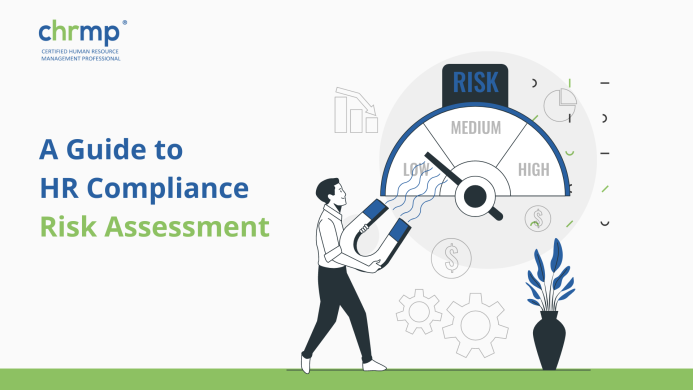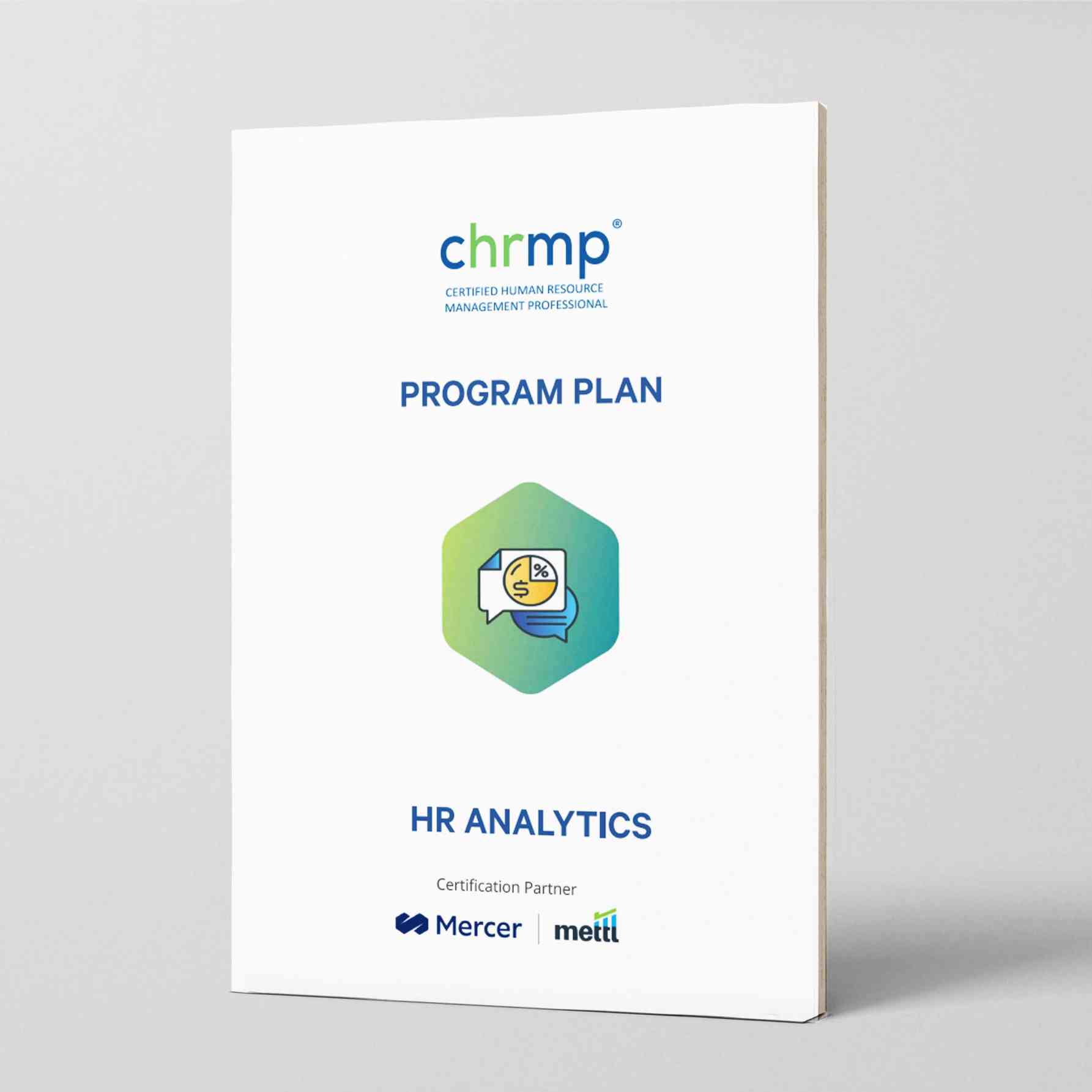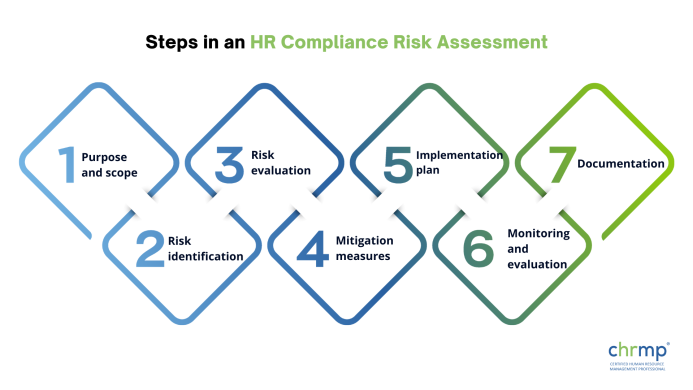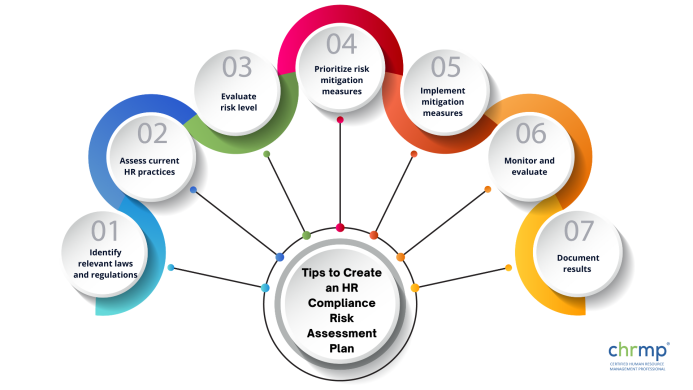

In today’s rapidly changing business landscape, ensuring that your HR practices are effective and compliant with all relevant regulations and laws is more important than ever.
In this blog, we’ll share expert insights, best practices, and much more to help you navigate the complex world of HR compliance and mitigate risk for your organization.
So without further ado, let’s get started!
HR compliance risk assessment evaluates and addresses the potential risks and legal liabilities associated with an organization’s human resource policies, practices, procedures, initiatives and drives.
HR compliance risk assessment ensures that the organization complies with all relevant government and company laws, by-laws and regulations, such as labour laws, equal employment opportunity laws, immigration laws, and data privacy laws.
The assessment involves identifying, evaluating and analyzing potential compliance risks with various govt. and company laws and by-laws, developing and implementing measures to mitigate those risks, and monitoring ongoing compliance efforts to ensure the organization remains compliant over time.

HR compliance risk assessment is important because it helps organizations analyse, evaluate and avoid potential legal penalties, reputational harm, and other negative consequences resulting from non-compliance with HR-related laws and regulations.
HR compliance risk assessment helps organizations foster a positive culture at the workplace by ensuring that their HR practices are fair, ethical, and transparent.
By conducting regular HR compliance risk assessments, organizations can proactively identify and address any compliance issues and make necessary changes to their HR practices to minimize the risk of legal liability and ensure a positive workplace environment.
Overall, HR compliance risk assessment helps organizations operate proactively, responsibly and sustainably by not getting tangled in legal loopholes, thereby protecting employees and businesses from legal penalties and reputational damage.
Organizations must consider and address many HR compliance issues to ensure they comply with laws and regulations. Here are five of the most common issues:

Organizations must ensure they are not discriminating against employees or subjecting them to harassment. This includes protecting employees from discrimination based on race, gender, age, religion, sexual orientation, and other protected characteristics.
Organizations must comply with wage and hour laws that dictate minimum wage rates, overtime pay, and other compensation-related issues. These laws are complex and can vary by state and industry.
Employers have a legal obligation to provide a safe and healthy workplace for their employees. This includes ensuring compliance with Occupational Safety and Health Administration (OSHA) regulations and preventing workplace injuries and accidents.
Organizations must properly classify employees as either employees or independent contractors. Improper employee classification can result in serious legal and financial consequences, including fines and back pay.
Employers must keep accurate records of employee information, including pay, hours worked, and personnel files. Maintaining proper records can result in legal and financial penalties, including lawsuits and government fines.
Other HR compliance issues may include immigration compliance, data privacy and security, and leave management. It is important for organizations to regularly review and update their HR policies and procedures to ensure they comply with all applicable laws and regulations.
Yes, most companies would benefit from conducting an HR compliance risk assessment. HR compliance risk assessment helps businesses evaluate and mitigate HR-related risks, including legal compliance with labour laws, equal employment opportunity laws, immigration laws, data privacy laws, benefits and compensation, employee leave laws, and harassment and discrimination laws.
By conducting an HR compliance risk assessment, organizations can reduce the risk of legal liability and promote a positive workplace culture by mitigating the fear and negativity associated with getting embroiled with govt. and company laws and by-laws, thus helping to attract and retain top talent and create a more productive and engaged workforce.
HR compliance risk assessments are especially important for organizations that operate in regulated industries, have many employees, or are undergoing significant changes, such as mergers, acquisitions, or expansions. However, even small organizations can benefit from conducting a basic HR compliance risk assessment to ensure that their HR practices are up to date and in compliance with applicable laws and regulations. Well-regulated HR initiatives and drives help attract and retain top talent in the industry and it always pays well to have an engaged and productive workforce.
The steps in an HR compliance risk assessment typically include the following:

A clear statement of the purpose and scope of the HR compliance risk assessment, including the laws and regulations that will be considered and the HR practices that will be reviewed.
A process for identifying and evaluating potential HR compliance risks, therefore a whole host of HR policies, initiatives, drives, procedures, employee surveys, and analysis of HR-related data are put under review.
A process for evaluating the level of risk associated with each identified compliance issue, taking into account the potential impact on the organization and the likelihood of non-compliance.
A plan for mitigating HR compliance risks, underlining the strict specific actions that will be taken to address each risk, such as cutting down on privileges like employee training, leave absences, sabbatical leave and reduced benefits and compensation.
A plan for implementing the identified mitigation measures, including timelines, resource allocation, benefits, privileges and specific responsibilities.
A process for monitoring and evaluating the effectiveness of the HR compliance risk assessment plan, including regular assessments of HR practices and procedures, review of audit results, and analysis of HR-related data.
Documentation of the HR compliance risk assessment plan, including the results of risk identification, evaluation, and mitigation, as well as the results of monitoring and evaluation.
By including these elements in an HR compliance risk assessment plan, organizations can effectively evaluate and address HR compliance risks, promoting a positive workplace culture with highly engaged, more productive employees while also reducing the turnover rate and the risk of legal liability, reputational damage and the negativity associated with embroilment with law.
An HR compliance risk assessment plan can be created by following these steps:

Research the HR-related laws and regulations that might apply to our organization, considering your size, industry, and location.
We will have to conduct a thorough review of our current HR practices, policies, and procedures to identify any potential compliance risks. This includes conducting employee surveys, reviewing personnel records, and examining current HR processes.
Evaluate the level of risk associated with each identified compliance issue. Consider the potential impact on your organization and the likelihood of non-compliance.
Based on the results of our risk assessment, prioritize the compliance risks that need to be addressed first and develop a plan for mitigating each risk to avoid legal penalties on a proactive basis.
Implement the identified risk mitigation measures, such as updating HR policies and procedures, providing employee training, and conducting regular audits, boldly underlining the repercussions that could be undertaken in case of even mild non-compliance.
Regularly monitor your HR practices to ensure ongoing compliance and evaluate the effectiveness of your risk mitigation measures. Adjust your plan as needed to address any new compliance risks or changes in the regulatory environment.
Document the results of your HR compliance risk assessment, including the identified risks, the measures taken to mitigate those risks, and the results of monitoring and evaluation. All related documents must be in proper order, both in soft and hard copy form, available for easy retrieval.
By following these steps, you can create a comprehensive HR compliance risk assessment plan.
1.What is an HR compliance risk assessment plan?
A compliance risk assessment plan is a structured approach for evaluating and mitigating HR-related risks, including legal compliance with labour laws, equal employment opportunity laws, immigration laws, data privacy laws, benefits and compensation, employee leave laws, and harassment and discrimination laws.
2.Why is an HR compliance risk assessment plan important?
A compliance risk assessment plan is important because it helps organizations identify and address potential HR-related risks, reducing the likelihood of legal liability and promoting a positive workplace culture.
3.What are the key elements of an HR compliance risk assessment plan?
The key elements of a compliance risk assessment plan typically include purpose and scope, risk identification, risk evaluation, mitigation measures, implementation plan, monitoring and evaluation, and documentation.
4.How often should an HR compliance risk assessment plan be updated?
The frequency of updates to an HR compliance risk assessment plan will depend on the organization and the regulatory environment. Still, conducting a comprehensive HR compliance risk assessment at least once a year is typically recommended, with regular monitoring and evaluation of HR practices in between.
5.Who is responsible for conducting an HR compliance risk assessment?
The responsibility for conducting an HR compliance risk assessment may fall to an organization’s HR department, a dedicated compliance team, or an external consultant, depending on the size and complexity of the organization. Regardless of who is responsible, it is important that the HR compliance risk assessment plan involves input and buy-in from key stakeholders throughout the organization.
In conclusion, conducting an HR compliance risk assessment is an imperative step for organizations on the lookout to reduce legal liability and promote a positive workplace culture. By evaluating and mitigating HR-related risks, organizations can create a more productive and engaged workforce, attract and retain top talent, and build a strong reputation as responsible and ethical employer.
The process of conducting an HR compliance risk assessment involves identifying potential HR-related risks, evaluating the level of risk associated with each issue, developing mitigation measures, implementing the mitigation measures, and regularly monitoring and evaluating HR practices and procedures.
While the process seems daunting, the benefits of conducting an HR compliance risk assessment far outweigh the time and resources required. Organizations that invest in conducting an HR compliance risk assessment will not only reduce the risk of legal liability but also create a more positive and productive workplace culture, a more focused, engaged and productive workforce helping to build a stronger and more successful organization in the long run.

Fill in the below details to get a CHRMP HR Analytics Program Plan.

Grab Your 25 Free Email Templates Now